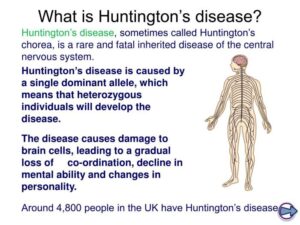
Learning disabilities can sometimes feel like that mysterious puzzle piece that just refuses to fit, no matter how hard you try! As we dive into this intricate world, we’ll explore the various types of learning disabilities, their characteristics, and the surprising statistics that reveal their prevalence among children and adults alike. Spoiler alert: it’s more common than you think! We’ll also peek into the connection between these disabilities and mental health, ensuring we cover all the bases in this enlightening journey.
Whether you’re a parent, teacher, or just a curious mind, understanding learning disabilities is key to unlocking potential and fostering a supportive environment. With insights into effective teaching strategies and community resources, we’ll arm you with the knowledge to make a difference. So, buckle up as we embark on this informative yet entertaining ride!
Understanding Learning Disabilities

Learning disabilities are like those pesky house guests who overstay their welcome—uninvited, they can make everyday tasks far more complicated than they need to be! While they may seem like a party crasher in the classroom or workplace, understanding these disabilities is crucial to helping those affected thrive in their environments. So, let’s embark on this enlightening journey through the world of learning disabilities, filled with quirks, statistics, and the occasional comedic relief.Various types of learning disabilities exist, each with its own distinct characteristics.
These include dyslexia, which is like trying to read a book where all the letters have decided to play musical chairs; dysgraphia, where forming letters on a page feels like taming a wild beast; and dyscalculia, which turns numbers into a foreign language. Let’s break down the characteristics of these disabilities and more:
Types of Learning Disabilities
Understanding the different types of learning disabilities is essential to support and empathy. Here’s a closer look at some of the most common types:
- Dyslexia: Affects reading and language processing, making it challenging to decode words and understand text.
- Dysgraphia: Impacts writing abilities, leading to difficulties in spelling, handwriting, and organizing thoughts on paper.
- Dyscalculia: Affects mathematical skills, making it hard to comprehend numbers, perform calculations, and tell time.
- Auditory Processing Disorder: Challenges the ability to process sounds, affecting comprehension of spoken language.
- Visual Processing Disorder: Interferes with interpreting visual information, impacting reading and comprehension.
Statistics highlight that learning disabilities are more common than you might think. According to the National Center for Learning Disabilities, approximately 1 in 5 children in the U.S. has a learning disability, which translates to about 2.4 million students. These percentages are not just numbers but represent real individuals navigating their academic lives with unique challenges.
Prevalence of Learning Disabilities
The prevalence of learning disabilities among both children and adults is a significant concern that warrants attention. Understanding these statistics can foster awareness and inclusivity:
- Studies show that around 5% to 15% of the population may experience some form of learning disability.
- In schools, about 7.1% of students aged 3-21 receive special education services under the category of specific learning disabilities.
- Adults with learning disabilities may face challenges in employment, with only 54% reported to be employed compared to their non-disabled peers.
Learning disabilities don’t just stop at academics; they can also have a profound influence on mental health. The relationship between learning disabilities and mental health issues can be likened to a tangled ball of yarn—pull on one part, and the whole thing can unravel.
Relationship Between Learning Disabilities and Mental Health Issues
Research indicates a significant correlation between learning disabilities and mental health challenges. Individuals with learning disabilities may experience anxiety, depression, and low self-esteem due to their struggles in traditional learning environments. Below are some key points regarding this relationship:
- Increased Anxiety: Many students with learning disabilities may develop anxiety, fearing academic failure or social stigma.
- Low Self-Esteem: Experiencing repeated difficulties in school can lead to negative self-perception and a lack of confidence.
- Depressive Symptoms: The stress of managing learning disabilities can result in feelings of hopelessness and withdrawal from social activities.
“Understanding and addressing learning disabilities can help pave the way for a brighter, more inclusive future for all.”
The complexities of learning disabilities are multifaceted, affecting not only the academic realm but also emotional well-being. Recognizing these challenges can help create more supportive environments that foster growth and understanding.
Impact on Health
Learning disabilities often come with a side of unexpected health challenges, like a surprise party you didn’t RSVP to. Not only do they affect academic performance, but they can also have a ripple effect on overall health and wellness. The mental strain of navigating the world with a learning disability can lead to stress, anxiety, and even depression. It’s like trying to run a marathon with shoelaces tied together—exhausting and a bit chaotic!The correlation between learning disabilities and certain health conditions is noteworthy.
Research has shown that individuals with learning disabilities may experience higher rates of conditions such as asthma and autism spectrum disorders. This intersection of challenges can create a unique set of hurdles. For instance, the added stress of managing learning difficulties can exacerbate physical health issues, leading to an overall decline in well-being. It’s like juggling flaming torches while balancing on a unicycle—talk about a tough act!
Correlation with Other Health Conditions
The relationship between learning disabilities and other health issues is complex. Understanding this interplay can provide insight into how to better support individuals facing these challenges. The following points highlight key correlations:
- Individuals with learning disabilities may have a higher prevalence of asthma, potentially due to increased anxiety and stress levels that can trigger symptoms.
- There is a noted overlap between learning disabilities and autism spectrum disorders, which can complicate diagnosis and treatment strategies.
- The stress of academic pressure can lead to poor physical health outcomes, such as decreased exercise and poor nutrition, creating a vicious cycle.
- Mental health issues, including anxiety and depression, are more common in individuals with learning disabilities, impacting both emotional and physical health.
Strategies for managing physical health in individuals with learning disabilities are essential. Here are some practical approaches that can promote overall wellness:
- Regular Physical Activity: Engaging in regular exercise, such as dancing, swimming, or even walking the dog, can improve mood and physical health.
- Nutrition Awareness: A balanced diet rich in fruits, vegetables, and whole grains provides the essential nutrients needed for optimal brain and body function.
- Mindfulness and Relaxation Techniques: Practices like yoga or meditation can help alleviate stress and improve mental health, which in turn supports physical health.
- Routine Health Check-ups: Regular visits to healthcare providers ensure that any emerging health issues are addressed early.
“Physical health is connected to mental wellness; when one shines, the other can’t help but sparkle!”
Promoting awareness and understanding of these health impacts can lead to better support systems that allow individuals with learning disabilities to thrive, rather than just survive.
Support and Resources

Navigating the world of learning disabilities can feel a bit like trying to find a needle in a haystack, but fear not! There are plenty of strategies and resources that shine brighter than a disco ball at a dance party. Understanding how to support students with learning disabilities equips educators, families, and communities with the tools needed to foster success and well-being.
Effective Teaching Strategies for Students with Learning Disabilities
Implementing effective teaching strategies can create a supportive learning environment for students with learning disabilities. These approaches help in accommodating diverse learning needs while also enhancing overall academic performance. Consider the following strategies that can make a significant difference:
- Multi-Sensory Instruction: Engaging multiple senses helps reinforce learning. Using visual aids, auditory cues, and hands-on activities can make complex concepts more accessible.
- Structured Learning Environments: Consistency is key! A predictable routine and clear expectations reduce anxiety and help students focus on learning.
- Chunking Information: Breaking down tasks into smaller, manageable parts can help students process information more effectively, making learning feel less overwhelming.
- Assistive Technology: Tools like text-to-speech software, audio books, and apps designed for learning disabilities can provide essential support and enhance learning experiences.
Available Resources and Support Systems
A plethora of resources exists for individuals and families coping with learning disabilities. These resources can provide guidance, offer support, and connect families with helpful networks. Here’s an overview of invaluable resources that can make a world of difference:
- Local and National Organizations: Groups like the Learning Disabilities Association of America (LDA) offer resources, support groups, and advocacy for individuals and families.
- School-Based Support Services: Many schools have special education programs or resource rooms that provide tailored instruction and support for students with learning disabilities.
- Online Resources and Forums: Websites like Understood.org provide articles, tools, and forums for dialogue, enabling families to share experiences and solutions.
- Counseling Services: Professional support through psychologists or counselors can help individuals and families navigate the emotional and psychological impacts of learning disabilities.
Community Awareness Programs about Learning Disabilities
Raising awareness about learning disabilities is key to creating inclusive communities that understand their impact on health and well-being. Designing a community awareness program can facilitate education and reduce stigma. Below are engaging ideas for effective programs:
- Workshops and Seminars: Organizing sessions led by experts in special education can inform parents, teachers, and community members about learning disabilities and strategies for support.
- Community Events: Hosting family fun days with activities focused on learning disabilities can foster understanding in a relaxed environment. Think games, testimonials, and maybe a bake sale to sweeten the deal!
- Public Awareness Campaigns: Using social media, posters, and local media to share information about learning disabilities can help spread awareness and encourage community engagement.
- Collaborations with Local Businesses: Partnering with local businesses for sponsorships or donations can help fund awareness programs, while also showcasing community support for individuals with learning disabilities.
Last Point
As we wrap up our exploration of learning disabilities, it’s clear that awareness and understanding are the first steps toward creating a more inclusive world. By recognizing the unique challenges faced by individuals with learning disabilities, we can better support them in achieving their dreams—one quirky puzzle piece at a time! Let’s continue the conversation and advocate for resources and strategies that empower these individuals to shine bright!
FAQ Section
What are the most common types of learning disabilities?
The most common types include dyslexia, dyscalculia, and dysgraphia, each affecting reading, math, and writing skills, respectively.
Can adults have learning disabilities?
Absolutely! Learning disabilities can persist into adulthood, and many adults may not even be aware they have one.
How can parents support children with learning disabilities?
Parents can support their children by advocating for appropriate educational resources, fostering a positive home environment, and encouraging open communication about challenges.
Is there a link between learning disabilities and other health conditions?
Yes, studies suggest a correlation between learning disabilities and conditions like ADHD, autism, and even asthma, highlighting the importance of comprehensive care.
What resources are available for families dealing with learning disabilities?
Families can access various resources such as support groups, specialized educators, and online platforms that provide information and strategies tailored to learning disabilities.





